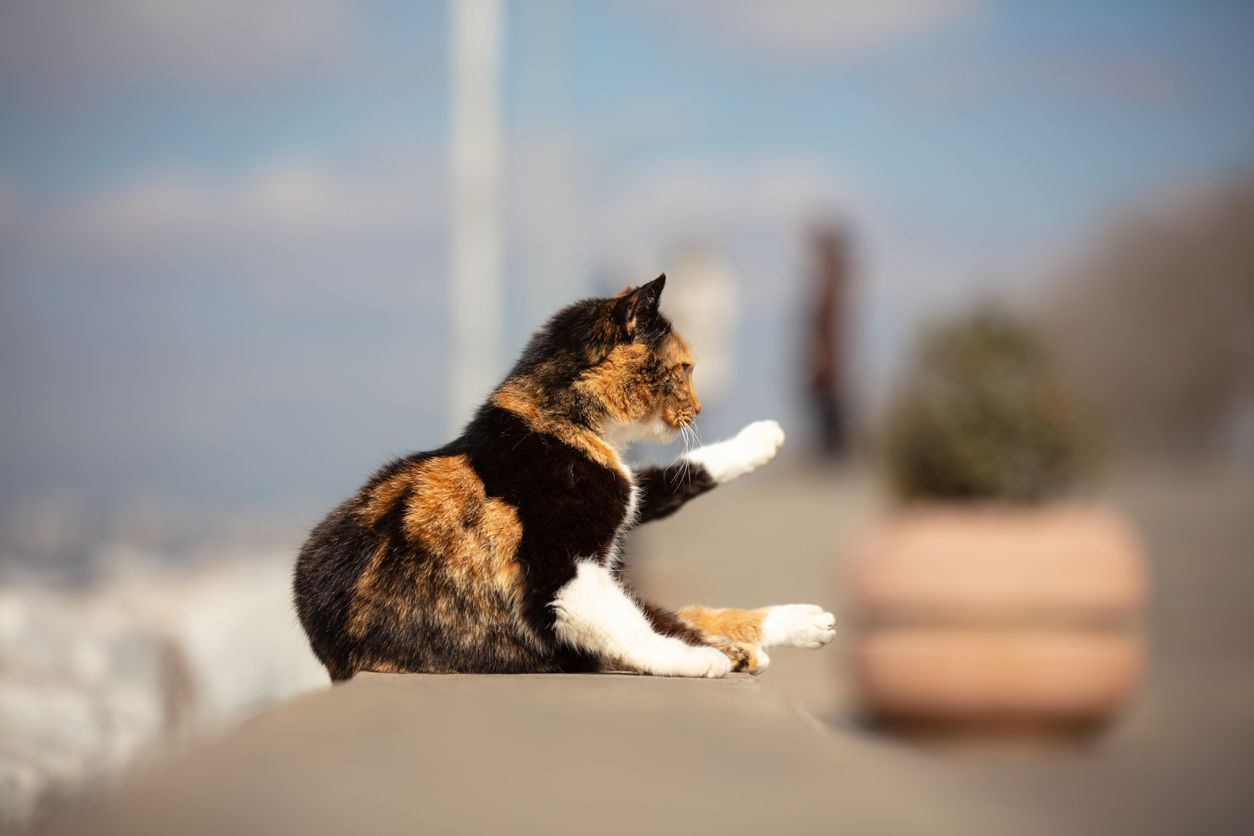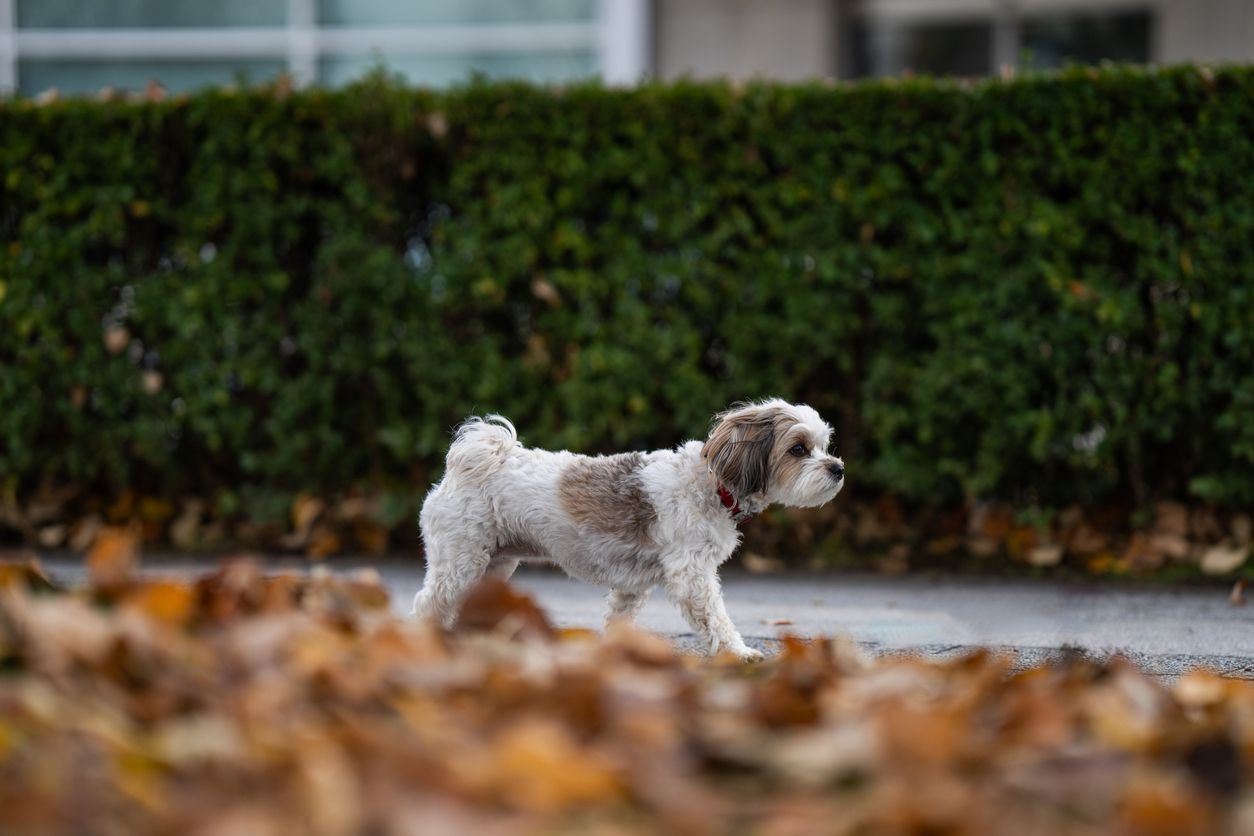How to treat luxating patella in cats

Disclaimer: This article, its content, and its related references do not constitute veterinary advice and should not be considered a substitute for veterinary care. If your pet is showing any symptoms that could indicate a medical emergency, please seek immediate emergency care.
Patellar luxation is a condition in which a cat’s kneecap doesn’t stay in the groove in the thigh bone that holds it in place, leading to clinical signs, such as limping and other mobility issues. Patellar luxation is usually a condition that develops as the kitten grows, but it’s possible for a kneecap to dislocate as the result of physical trauma to the knee joint or leg, including the bones, patellar ligaments, and tendons. Treatment for a luxating patella varies depending on the severity of the disease. Read on to learn:
- What is a patellar luxation?
- What are the signs of a feline luxating patella?
- How do vets treat luxating patella in cats?
- How did my cat dislocate their kneecap?
Patellar luxation can occur to either side of the central groove and ranges from mild to severe in degree. Some cases are so severe that once the kneecap is out of place, it’s very difficult to get it back in place. Surgery is typically recommended when the luxation is severe enough to cause persistent lameness or limping. However, patellar luxation is a rare cause of rear-leg lameness in cats, and most cases are due to something else. The prognosis with surgery is usually very good, but the most severe cases have an approximately 50 percent chance of recurrence.
What is patellar luxation in cats?
Patellar luxation, or luxating patella, is an orthopedic disease common in small dogs in which the kneecap (patella) repeatedly or permanently dislocates without being injured. The condition shares many common clinical signs with other musculoskeletal disorders, such as limping and stiff hind legs. Patellar luxation is rare in cats, so these symptoms are more likely to be caused by a different issue.
“Luxating patella is usually a developmental condition, and there is evidence suggesting a strong heritable component in some purebred cats,” explains Dr. Jo Myers, a vet on the Vetster platform. “If a cat is diagnosed with the developmental form of patellar luxation in one knee, it is highly likely that the other knee will eventually be affected.”
The patella is a thick, triangular-shaped bone covering the front of the knee joint, or stifle joint, in each rear leg. The patella protects the stifle joint and is held in place within a large groove (trochlear groove) in the end of the thigh bone (femur) by the patellar ligament. A healthy patella slides smoothly up and down along the trochlear groove. Patellar luxation describes what occurs when the kneecap is too loose. The laxity allows the kneecap to dislocate to a variable degree to either side of the trochlear groove. The instability of the knee leads to abnormal wear and tear on the soft tissue and bone within the joint, leading to inflammation of the knee and eventual arthritis. The severity of patellar luxation is graded on a scale of 1–4 (with 4 being the most severe) based on what the vet feels when trying to manipulate the kneecap during a physical exam. The grades of luxation are:
- Grade 1: The patella can be luxated manually, but it does not dislocate on its own
- Grade 2: The patella luxates spontaneously but, in general, stays in its normal position
- Grade 3: The patella is permanently luxated but can be moved back into place
- Grade 4: The patella is permanently luxated and cannot be moved back into place
In general, the higher the grade, the more severe the clinical signs.
Clinical signs of patellar luxation in cats
Symptoms of luxating patella in cats vary in type and severity depending on how far the condition has progressed. Cats with grade 1 patellar luxation typically show few to no symptoms, since their kneecap is in the right place most of the time. With grade 2 luxation, because the patella slips out of place on its own but goes back in easily and generally stays in place, the most common clinical sign is intermittent limping or refusal to bear weight on the affected leg(s). Most of the time, the cat walks normally and only occasionally limps or carries one of their rear legs. This typically doesn’t appear to be painful and comes and goes with no apparent reason.
With grades 3 and 4 luxation, the kneecap is out of place most or all of the time. As a result, signs of instability are more severe and persistent, such as persistent lameness. There may also be signs of arthritic changes to the knee joint, such as swelling, pain, or an abnormally large and knobby shape to the joint. A cat with a grade 3 or 4 patellar luxation won’t bear weight on the affected leg most or all of the time.
In all four grades, common signs may be observed when the kneecap is dislocated, including:
- Limping or skipping on the affected leg
- Reduced activity level
- Hesitance or inability to jump or run
- Holding the rear limb at an odd angle
With developmental patellar luxation, the cat usually doesn’t act as if they’re in pain, and there’s no obvious reason for why they’re suddenly carrying a rear leg. They also often return to using the leg normally again for no apparent reason and without signs of pain. Cats who have a luxating patella due to a traumatic injury will often act as if they’re in pain and have additional bodily injuries and symptoms.
How feline patellar luxation is diagnosed
When a cat presents with a history of hind-limb limping, carrying a back leg, or other mobility issues, a veterinarian usually starts with a thorough physical exam. X-rays of the affected leg may be recommended depending on what a vet feels and sees during the exam. Additional testing or advanced imaging may be recommended to rule other medical conditions in or out, or to better visualize the knee joint.
How to treat luxating patella in cats
Treatment options vary depending on how severe the patellar luxation is. Minor cases that don’t cause significant lameness may not require treatment at all or may be managed with exercise restriction, physical therapy, and medication.
In more severe cases, where the kneecap is out of place most or all of the time, surgical intervention is typically recommended. The goal of corrective surgery is to permanently restore the patella to the correct position. If both knees are affected, which is usually the case with the developmental form, the decision of whether to repair both knees at once or to separate the surgeries is made on a case-by-case basis.
Patellar luxation surgery in cats is usually very successful, with little chance of recurrence in grades 1–3. There is an approximately 50 percent chance of recurrence with a grade 4 patellar luxation. In the weeks after surgery, additional treatment is usually recommended during recovery. This may include:
- Prescription anti-inflammatories and pain relief
- Hot and cold compresses
- Maintaining a relaxed environment
- Minimal, controlled physical activity
- Physical therapy
Never give your cat pain medication or other drugs without instruction from a veterinarian. Many human medications or those meant for other animals are highly toxic to cats, even in small doses. It’s very important to follow the vet’s recommendations for exercise restriction while the knee is healing. Keeping your cat indoors and confined to a crate may be recommended to prevent them from running or jumping on the knee as it heals, even if they seem to be feeling much better.
How did my cat dislocate their kneecap?
Most cases of feline luxating patella are developmental, meaning the condition happens as the kitten grows. Purebred Devon rex and Abyssinian cats appear to be predisposed to this form of the disease, suggesting a hereditary component. Physical trauma to the leg can also cause the kneecap to become dislocated. However, additional damage to the knee or rest of the leg is expected in these cases.
What to do if your cat shows signs of joint pain
Joint pain and difficulty walking, running, or jumping in cats can be caused by a variety of medical conditions. Many have similar symptoms and are much more common than patellar luxation. A luxating patella is rare in cats, and it usually doesn’t appear painful. Instead, the lameness appears to come and go with no specific trigger. It’s important to talk to a veterinarian if your cat shows signs of joint pain, such as:
- Difficulty or inability to run or jump normally
- Spending less time in favorite high places
- Spending less time grooming, resulting in a poor coat condition
- Limping or skipping
- Signs of pain when certain areas of the body are touched
Attempting treatment at home before seeking veterinary care for these symptoms is not advised. There are many health issues that can cause these symptoms, some more serious than others. In order to form an effective treatment plan, it’s necessary to know what’s causing the joint pain. Delaying a vet visit increases the time before proper treatment can be given, potentially allowing the condition to worsen.
In addition, attempting treatment on your own can be dangerous. Many common medications that are safe for use in dogs and humans are toxic to cats, even when given in small doses. Orthopedic treatments, such as bandages and braces, can cause more damage if used inappropriately.
If your cat is showing signs of joint pain or limited mobility, an online vet through the Vetster platform can observe their gait at home in a virtual vet appointment, discuss likely causes of their issues, and offer you guidance for the next steps to take.
FAQ - How to treat a luxating patella in cats
Can a cat’s luxating patella heal on its own?
Low-grade patellar luxations in cats may be managed with supportive care, such as medication, physical therapy, and activity restriction. However, a severe luxating patella needs surgical treatment to keep the patella in its proper position.
What does a luxating patella look like in cats?
Symptoms of a feline luxating patella can vary depending on the severity of the condition. Cats with minor patellar luxations may have intermittent lameness or limp without an apparent cause. Severe luxations result in chronic lameness, and the affected cat may be unable to run, jump, or groom normally.
What is the best treatment for a luxating patella in cats?
The best treatment for a luxating patella depends on the individual cat and the severity of the condition. Minor cases sometimes do well either without treatment or with conservative management, such as physical therapy, medication, and controlling physical activity. For severe luxations, surgical treatment is warranted.




